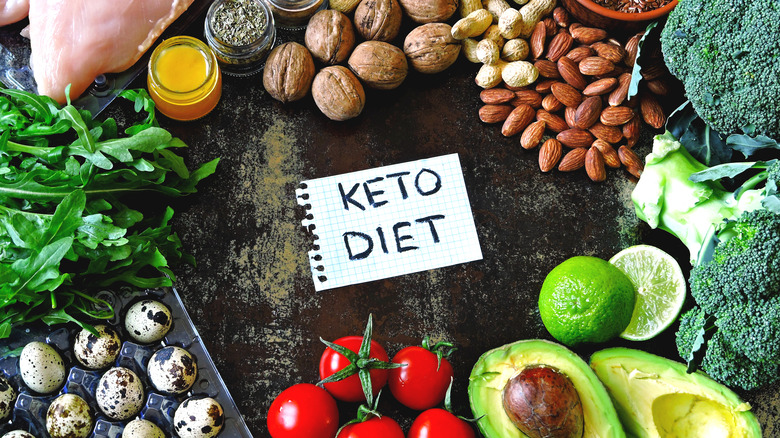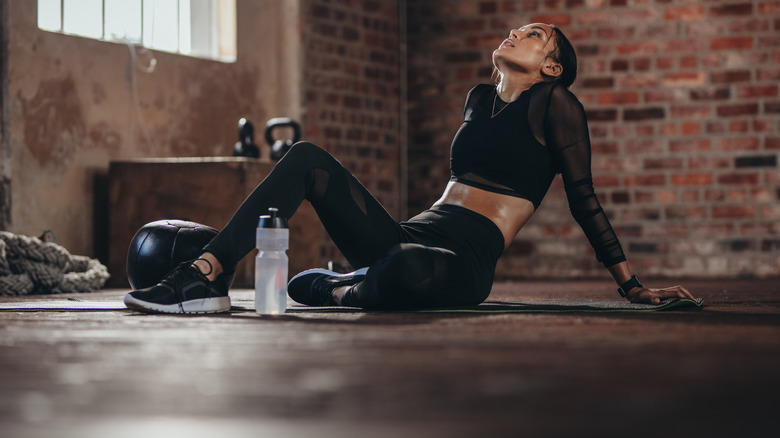What To Know Before Starting A Keto Diet
Starting a keto diet comes with its share of challenges. Be prepared to cut back on carbs, track your macros, and go through the so-called keto flu. You may also need to change how you think about fat and swap your snack for nuts, seeds, beef jerky, and other low-carb treats. These changes may seem overwhelming, but you can take one step at a time.
First, make sure you understand how the keto diet works. This eating plan is low in carbs, moderate in protein, and high in fat. The standard ketogenic diet is around 70% fat, 10% carbs, and 20% protein, but some versions alternate between low- and high-carb days, according to Indian Journal of Medical Research. Under normal circumstances, your body breaks down glucose, or sugar, for energy. When you cut back on carbs, your liver begins to produce ketone bodies, which serves as an alternative source of fuel. This is when you enter ketosis, a metabolic state in which your body uses fat instead of glucose to sustain itself.
Most dieters must limit carbs to 20 to 50 grams per day to get into ketosis, notes Harvard Medical School. But without enough carbs for fuel, your body can break down protein to meet its energy demands, according to the MSD Manuals. Therefore, eating too much protein can kick you out of ketosis and make it harder to burn fat.
With that being said, here's what you should know before starting the keto diet.
You may need to limit fruits and vegetables
The ketogenic diet can improve appetite control and aid in weight loss, but it has its drawbacks. For example, there is a risk of developing nutrient deficiencies, explains Harvard T.H. Chan School of Public School. As discussed earlier, this eating plan limits carbohydrates to less than 50 grams a day. Since most fruits, vegetables, and grains are high in carbs, they don't fit into a keto diet.
Health organizations recommend about two cups of fruits and two or three cups of vegetables per day, notes the Centers for Disease Prevention and Control. Failure to meet these guidelines can lead to vitamin and mineral deficiencies. You can still eat some fruits and veggies while on the keto diet, but your options are limited. For starters, stock up on avocados, berries, rhubarb, star fruit, lemons, cherry tomatoes, and other low-carb fruits, suggests Everyday Health.
As far as vegetables go, your best bet is to eat spinach, cabbage, cauliflower, green beans, watercress, broccoli, and arugula. Bok choy, celery, zucchini, radishes, and kale are low in carbs, too. Other veggies, such as corn, onion, and beans, should only be consumed in small amounts. It's okay to eat potatoes and other root vegetables occasionally, but you may have to cut the carbs from other meals in order to maintain ketosis.
You might feel worse before you feel better
If you're just starting a keto diet, you may experience flu-like symptoms for a couple of days. Fatigue, brain fog, nausea, stomach pain, body aches, mood swings, and insomnia are all common, according to clinical research published in the journal Frontiers in Nutrition. In rare cases, the so-called keto flu may cause a runny nose, migraines, depression, coughing, chills, fever, or joint pain. These symptoms are perfectly normal and should subside within two weeks.
Some say that bone broth, electrolytes, pickle juice, and high-fat products, such as medium-chain triglyceride (MCT) oil, can make it easier to manage the keto-flu, but there's little evidence to support these claims. Harvard Medical School recommends drinking plenty of water to avoid dehydration, a common cause of fatigue, dizziness, and body aches.
If you're still feeling sick, cut back on carbs gradually so your body can adjust to these changes more easily. "Slowly decrease your carbohydrate intake while slowly increasing your fat intake, changing [more gradually] from a high-carb to a low-carb diet," said registered dietitian nutritionist Amy Gorin to Women's Health. She also recommends eating high-fiber vegetables like cabbage and broccoli to prevent constipation, a potential side effect of the keto diet.
Going keto can affect your workouts
Carbs are your body's main source of fuel, playing a key role in muscle growth and repair. Therefore, it's normal to experience a decline in physical performance when you switch to a low-carb diet. For example, a 2017 study published in Nutrition and Metabolism found that ketogenic diets can affect endurance, peak power, and energy levels during exercise. These side effects are unlikely to make much of a difference for the average gym-goer, but they may pose problems for competitive athletes.
"Endurance athletes (marathoners or triathletes) may benefit from a state of ketosis," dietician Ariana Fiorita told the Cleveland Clinic. Unfortunately, this doesn't apply to rugby players, bodybuilders, and other athletes who rely on their strength and power, she added. Going keto can also affect muscle growth and exercise performance at higher intensities (per Nutrients). On the positive side, you may get leaner in as little as three to 12 weeks, depending on your metabolism, energy intake, and other factors.
All in all, starting a keto diet takes some planning and determination. You need to know what foods to eat and what foods to avoid, how to count your macros, and how to fight cravings, among other aspects. Plus, there is a risk of gaining the weight back when you return to normal eating. The Nordic diet, the DASH diet, and Mediterranean-style diets are less restrictive and more sustainable in the long run, so you might want to give them a try.



